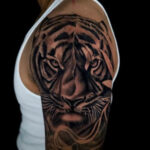New York City, a global hub of art, culture, and innovation, boasts a vibrant and storied tattoo history. From its underground roots to its current status as a celebrated art form, the evolution of the New York Tattoo scene is a fascinating journey. This article delves into the depths of this history, exploring the pivotal moments, key figures, and cultural shifts that have shaped the indelible mark of tattooing in the Big Apple.
The narrative of New York tattoo culture is intrinsically linked to the city’s rebellious spirit and artistic dynamism. To truly understand this history, we turn to the insights of those who have witnessed and documented its unfolding. Clayton Patterson, a renowned photographer and chronicler of New York City’s subcultures, has been capturing the New York tattoo scene for over three decades. His extensive archive and firsthand experiences offer an unparalleled perspective on this captivating world.
The Genesis of New York Tattoo Culture and the Era of Prohibition
The early days of New York tattoo culture were characterized by a gritty authenticity, far removed from the mainstream acceptance it enjoys today. In 1961, a significant turning point occurred when New York City Council declared tattooing illegal. This ban, intended to curb a hepatitis B outbreak, inadvertently pushed the art form underground, fostering a clandestine yet resilient tattoo community.
Before the ban, tattoo parlors, often found in working-class neighborhoods and along the Bowery, were frequented by sailors, soldiers, and those on the fringes of society. These early New York tattoo artists laid the groundwork for future generations, preserving the craft even as legal challenges mounted. The ban, however, cast a long shadow, forcing artists to operate discreetly and hindering the growth and open exchange of tattoo artistry.
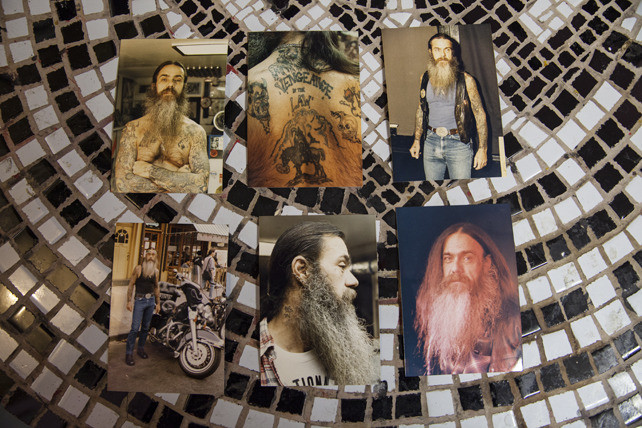 Clayton Patterson archive section showcasing the depth of tattoo history documentation.
Clayton Patterson archive section showcasing the depth of tattoo history documentation.
Despite the legal constraints, the spirit of New York tattoo culture persevered. The underground scene became a crucible for innovation and community. Artists and enthusiasts sought ways to connect and share their passion, laying the foundation for organized efforts to reclaim tattooing’s legality and artistic recognition.
The Tattoo Society of New York: A Beacon for Ink Enthusiasts
The 1980s marked a period of resurgence for New York tattoo culture, spearheaded by the formation of the Tattoo Society of New York (TSNY) in 1986. Founded by Ari Roussimoff and Clayton Patterson, the TSNY became a vital hub for artists, enthusiasts, and anyone curious about the world of New York tattoo.
The TSNY meetings, held at iconic downtown venues like CBGB 313 Gallery and The Pyramid Club, provided a platform for sharing knowledge, techniques, and camaraderie. These gatherings were crucial in fostering a sense of community and promoting the art of tattooing at a time when it was still legally restricted and often misunderstood. The society deliberately focused on tattooing as an art form, distinguishing it from broader body modification trends that were also emerging.
The TSNY attracted a diverse array of personalities, from established artists to aspiring apprentices. It became a melting pot of creativity, where ideas were exchanged, collaborations were forged, and the seeds of a New York tattoo renaissance were sown. The society also played a crucial role in documenting the evolving scene, with photographers like Elsa Rensaa and Clayton Patterson capturing the energy and artistry of the meetings.
The Fight for Legalization: A Turning Point for New York Tattoo
As the 1990s approached, the momentum for legalizing tattooing in New York City grew. Recognizing the need for change, Wes Wood reached out to Clayton Patterson, who in turn contacted Councilwoman Kathern Freed. This collaboration proved instrumental in initiating the legislative process to overturn the decades-old ban.
The effort to legalize New York tattoo faced significant hurdles, particularly with Mayor Rudolph Giuliani’s “law and order” stance. However, the combined efforts of activists, artists, and supportive politicians ultimately prevailed. In 1997, the law was changed, marking a monumental victory for the New York tattoo community and paving the way for the industry’s resurgence.
The legalization of tattooing in NYC was not just a legal victory; it was a cultural triumph. It legitimized tattooing as a recognized art form and opened the doors for a new era of growth, creativity, and mainstream acceptance. The tireless work of individuals like Patterson, Wood, and Freed ensured that New York tattoo could finally emerge from the shadows and flourish.
The New York Tattoo Renaissance: Explosion of Creativity and Culture
The late 1990s and early 2000s witnessed an explosion in the New York tattoo scene. With legalization in place, tattoo studios began to open across the city, attracting a new generation of artists and clientele. The TSNY’s groundwork had laid the foundation for this renaissance, fostering a community ready to embrace this newfound freedom.
Magazines like International Tattoo Magazine, co-founded by Jonathan Shaw and Debby Ullman, who was connected to the TSNY, further amplified the New York tattoo movement. These publications showcased the incredible talent emerging from the city and contributed to a growing global interest in New York tattoo artistry.
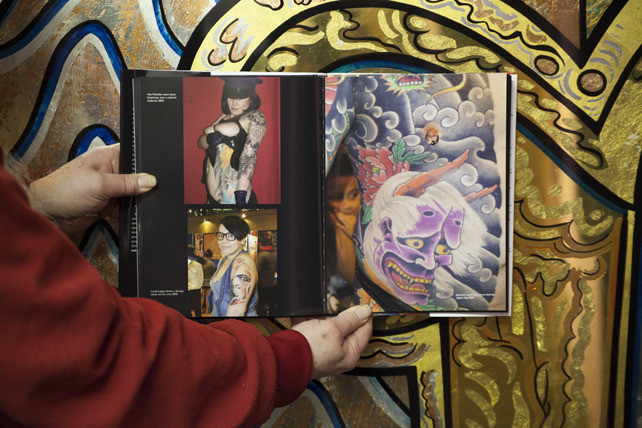 Jonathan Shaw, a prominent figure in the New York tattoo scene, captured in action.
Jonathan Shaw, a prominent figure in the New York tattoo scene, captured in action.
The New York City International Tattoo Convention, launched in 1998, became another landmark event. Co-created by Steve Bonge, Butch Garcia, Wes Wood, and Clayton Patterson, the convention provided a platform for artists from around the world to converge, collaborate, and showcase their work. It further solidified New York City’s position as a global epicenter of tattoo culture.
Key Figures and Enduring Legacies in New York Tattoo
The history of New York tattoo is populated by a cast of iconic figures who have left an indelible mark on the art form. From the early pioneers who kept the flame alive during the ban to the contemporary artists pushing boundaries today, their contributions are immeasurable.
Artists like Mike Bakaty, operating on the Bowery even during the ban, represent the resilience of the old guard. Jonathan Shaw, with his distinctive style and influential presence, embodies the artistic innovation that flourished in the city. Individuals like Tattoo Al and Tony Polito, mentioned by Patterson, further illustrate the diverse talent pool that contributed to the rich tapestry of New York tattoo.
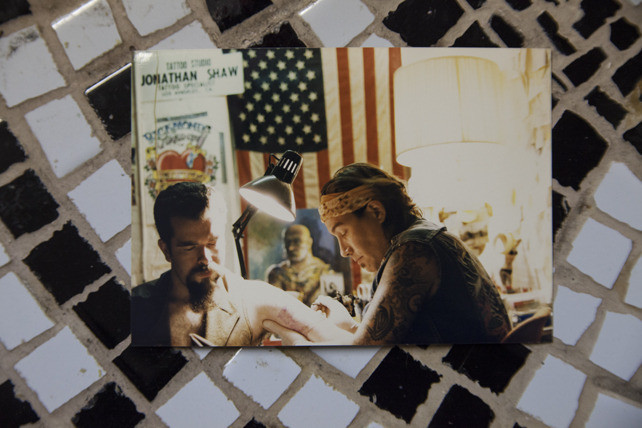 Tattoo Al, another key artist contributing to the diverse New York tattoo landscape.
Tattoo Al, another key artist contributing to the diverse New York tattoo landscape.
Clayton Patterson’s own role extends beyond documentation. His involvement with the TSNY, his advocacy for legalization, and his ongoing chronicling of the scene make him a central figure in the New York tattoo narrative. Similarly, Efrain John Gonzalez, whose photography is featured in the book Ink & Steel, has dedicated his career to capturing the raw and authentic essence of New York tattoo and body modification culture.
New York Tattoo on the Global Stage: Wildstyle and Beyond
The influence of New York tattoo extends far beyond city limits. Clayton Patterson’s involvement with Jochen Auer’s “Wildstyle and Tattoo Messe” in Europe highlights the global reach of New York’s tattoo culture. This event, bringing together diverse underground creative niches, provided a platform for New York tattoo artists and photographers to showcase their work to an international audience.
The “Wildstyle and Tattoo Messe” exemplifies the interconnectedness of global tattoo communities and the significant role New York tattoo has played in shaping worldwide trends. The cross-pollination of ideas and styles between New York and international scenes continues to enrich and evolve the art form.
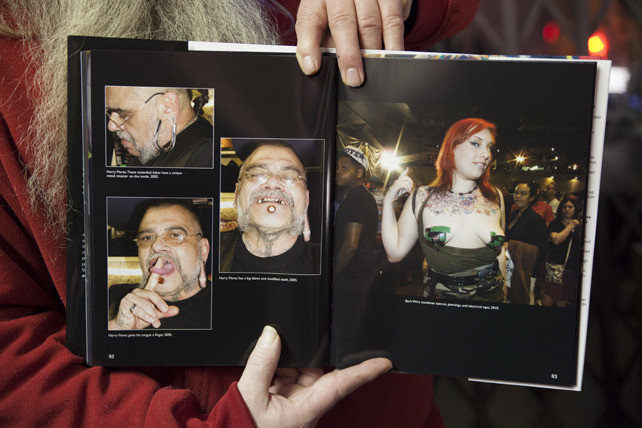 Huggy Bear, a personality within the New York tattoo scene, adding to its unique character.
Huggy Bear, a personality within the New York tattoo scene, adding to its unique character.
Conclusion: The Enduring Legacy of New York Tattoo
The story of New York tattoo is a testament to the power of art to persevere in the face of adversity and to the enduring spirit of a city that embraces creativity in all its forms. From its underground beginnings to its current status as a thriving and celebrated art form, New York tattoo culture has overcome legal challenges, fostered a vibrant community, and left an indelible mark on the global tattoo landscape.
The contributions of individuals like Clayton Patterson, the collective efforts of the Tattoo Society of New York, and the countless artists who have called the city home have shaped the unique identity of New York tattoo. As the art form continues to evolve, its roots in the gritty streets and artistic enclaves of New York City remain a vital source of inspiration and innovation. The legacy of New York tattoo is etched not just in ink on skin, but in the cultural fabric of the city itself.
